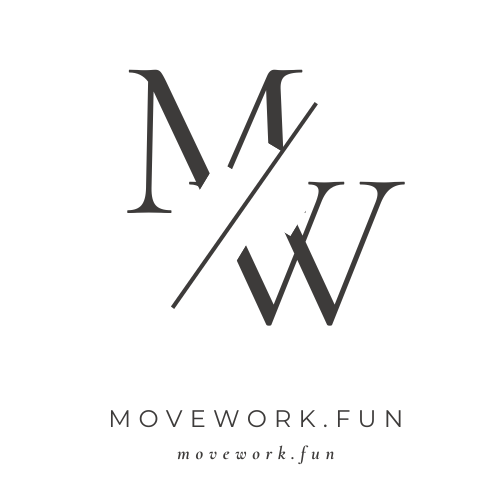In today’s digital age, technology can be both a blessing and a curse when it comes to managing work and personal life. On one hand, constant connectivity and digital tools can create an overwhelming sense of always being “on.” On the other hand, when used intentionally and strategically, technology can serve as a powerful ally in achieving a healthy work-life balance. From productivity apps to time-tracking tools, the right technological resources can help you streamline tasks, reduce stress, and protect your personal time. In this article, we explore how technology can aid in managing work and life more effectively.
The Double-Edged Sword of Technology
Technology has revolutionized the way we work, allowing us to connect globally, collaborate in real-time, and perform tasks more efficiently. However, it has also introduced new challenges. With constant emails, notifications, and apps demanding our attention, it can be hard to disconnect from work, even during personal time.
The key is to use technology wisely. Instead of letting it control you, leverage tools that enhance productivity, create structure, and protect your time. By setting boundaries around technology use, you can avoid feeling overwhelmed while still benefiting from the conveniences it offers.
Technology for Managing Time and Productivity
One of the biggest obstacles to achieving work-life balance is poor time management. When tasks pile up, work can spill into your personal time, leaving little room for rest or family. Fortunately, technology offers several tools that help you manage your time more effectively.
1. Time Management Apps
Time management apps like Trello, Asana, and Todoist are designed to help you organize tasks, set deadlines, and stay on top of your to-do list. By breaking down larger projects into manageable tasks, these tools allow you to prioritize your work and ensure that nothing falls through the cracks.
Using these apps, you can easily track your progress throughout the day, ensuring you’re making steady progress on tasks without spending unnecessary time on unimportant tasks. When your workday is organized, you can complete tasks efficiently and leave your work behind at the end of the day.
2. Calendar and Scheduling Tools
A digital calendar, such as Google Calendar or Outlook, is invaluable for scheduling your day and balancing work with personal commitments. You can plan meetings, deadlines, and events, while also blocking off personal time for self-care or leisure activities.
Scheduling software like Calendly can help automate scheduling, allowing others to book time with you based on your availability. This reduces the back-and-forth communication that often disrupts your workflow and makes it harder to create boundaries around work.
By having a visual representation of your day, you can more easily see when you’re overcommitting and adjust accordingly. The key is to protect your personal time just as much as you would protect a work meeting.
Technology for Enhancing Focus and Reducing Distractions
Maintaining focus in a world filled with distractions can be difficult. Technology can be a double-edged sword here as well; while it offers tools for focus, it also creates distractions. Learning how to block out distractions and stay focused during work hours is crucial for maintaining a work-life balance.
3. Focus and Pomodoro Timers
One popular technique for staying focused is the Pomodoro Technique, which involves working in short bursts (usually 25 minutes), followed by a 5-minute break. Apps like Focus Booster and Toggl can help you implement this technique by tracking your work intervals and reminding you to take breaks.
By using these tools, you create a structured approach to your workday, helping you stay focused and ensuring that you take regular breaks to refresh your mind. This prevents burnout and helps maintain your productivity levels throughout the day.
4. Distraction-Free Tools
Apps like Forest, Freedom, and Cold Turkey allow you to block distracting websites and apps during work hours. These tools can prevent you from checking social media or getting sidetracked by irrelevant notifications, helping you stay focused on the task at hand.
By limiting distractions, you can accomplish more in less time and avoid wasting precious minutes on unproductive activities. This allows you to maintain a better work-life balance by finishing your work more efficiently and freeing up time for other activities.
Technology for Maintaining Mental Health
Work-related stress can negatively impact your mental health, which is why it’s essential to prioritize self-care and stress management. Fortunately, technology offers several tools that promote mental well-being and can help you manage stress.
5. Meditation and Mindfulness Apps
Meditation and mindfulness apps, such as Headspace, Calm, and Insight Timer, are great for managing stress and improving mental health. These apps offer guided meditations, breathing exercises, and mindfulness practices that can be done in just a few minutes a day. Incorporating these practices into your routine can help you reset and recharge during your workday, reducing stress and improving your focus.
Additionally, these apps can help you wind down at night, improving your sleep quality and ensuring that you wake up feeling refreshed and ready to tackle the day ahead.
6. Sleep and Wellness Trackers
Another key aspect of work-life balance is maintaining good health, and sleep is a crucial part of that. Wearable devices like Fitbit or Apple Watch and apps like Sleep Cycle track your sleep patterns and offer insights into how you can improve your sleep quality. By monitoring your sleep, you can make adjustments to your lifestyle, ensuring you get enough rest to perform at your best both at work and in your personal life.
Technology for Building and Maintaining Relationships
Maintaining strong personal relationships is an important part of achieving work-life balance. Technology plays a key role in keeping in touch with loved ones, even when you are physically distant.
7. Video Call and Messaging Apps
Apps like Zoom, Skype, and WhatsApp make it easier to stay connected with family and friends, regardless of geographical distance. Regular video calls or even quick text messages can help you maintain a strong support network, reducing feelings of isolation and increasing your overall well-being.
Setting aside time for virtual socializing, just like you would schedule a work meeting, can ensure that you nurture your relationships without neglecting your work responsibilities.
Conclusion: Using Technology Mindfully
While technology can certainly contribute to a better work-life balance, the key to its success is mindful use. By choosing the right tools, setting clear boundaries, and using technology to enhance productivity and well-being, you can manage both your professional and personal life with greater ease.
The digital world offers countless solutions to streamline tasks, reduce distractions, and promote personal growth. When used intentionally, technology can support your efforts to create a balanced, fulfilling life, without overwhelming you.
Remember, achieving work-life balance is not about working harder; it’s about working smarter with the help of technology. Embrace the tools that serve you, and let go of those that add unnecessary stress. With the right approach, you can have a successful career and a meaningful personal life, all thanks to the power of technology.
Get in Touch
Copyright © 2025 movework.fun

